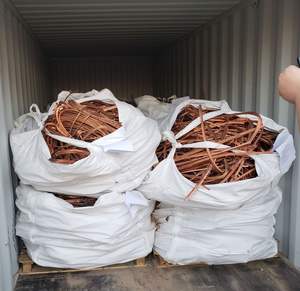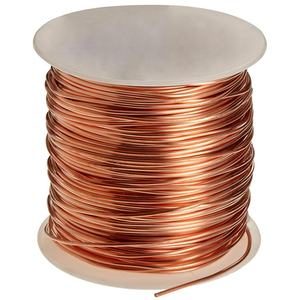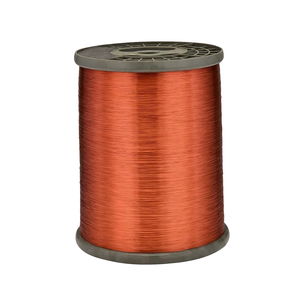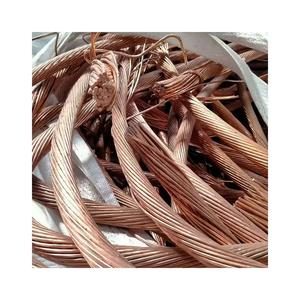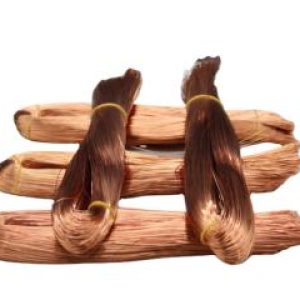
(High Purity Copper Wire Cable Scrap / Copper non-insulated wire scrap)
Parameters of High Purity Copper Wire Cable Scrap / Copper non-insulated wire scrap
1. What is the scope of the wire? Copper wire can be used in various applications such as cable, electronics, and construction.
2. What kind of wire is required? Different brands and types of copper wires have different specifications for their performance, resistance, and durability.
3. What kind of material is needed? Copper wire is typically made from high purity copper ore, but other materials such as metals, glass fibers, or electronic components may also be used.
4. What is the maximum allowable current (MAC) that can flow through the wire? The maximum allowable current is based on the resistance of the wire to electrical current.
5. What is the bend stress or strain during which the wire will be used? This value determines the type of wires that will be produced and can affect the length and bending flexibility of the wire.
6. What is the impact of the applied temperature on the lifespan of the wire? High temperatures can cause damage to the copper in the wire and lead to reduced service life.
7. What is the application of the wire? The wire can be used for a variety of applications, including in cables,ors, transformers, and more.
8. What is the pricing? The cost of producing high-purity copper wire can vary depending on the type, size, and production quantity.
9. Is there any compatibility with other components? If the wire needs to be compatible with other components, it should be available in the same grade or higher purity than the original copper wire.
10. How long does the wire need to last? The lifespan of a copper wire depends on its quality, use conditions, and environmental factors. However, the recommended lifetime range for most wire materials is usually between 10 and 20 years.
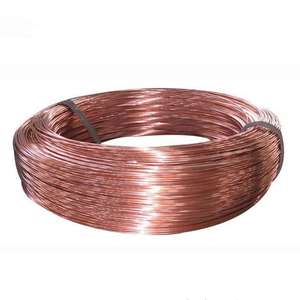
(High Purity Copper Wire Cable Scrap / Copper non-insulated wire scrap)
Applications of High Purity Copper Wire Cable Scrap / Copper non-insulated wire scrap
-
Electrical Wiring: Used extensively in building wiring for lighting, heating, and power distribution due to its high conductivity and safety.
-
Electronics: Found in PCBs, transformers, motors, and various electronic components where precise signal transmission is crucial.
-
Telecommunications: Copper wires, especially twisted pairs, are used in telephone lines and data transmission cables.
-
Power Transmission: Thicker copper wires are used in power grids for transmitting electricity over long distances.
-
Automotive Industry: Copper wiring is essential in vehicles for the electrical system, including ignition, lighting, and control systems.
Company Profile
Copper Channel is a trusted global metal material supplier & manufacturer with over 12-year-experience in providing super high-quality copper products and relatives products.
The company has a professional technical department and Quality Supervision Department, a well-equipped laboratory, and equipped with advanced testing equipment and after-sales customer service center.
If you are looking for high-quality copper materials and relative products, please feel free to contact us or click on the needed products to send an inquiry.
Payment Methods
L/C, T/T, Western Union, Paypal, Credit Card etc.
Shipment
It could be shipped by sea, by air, or by reveal ASAP as soon as repayment receipt.
FAQs of High Purity Copper Wire Cable Scrap / Copper non-insulated wire scrap
Q: Why is copper used more than other metals for wiring?
A: Copper’s high conductivity, combined with its relatively low cost compared to precious metals like gold or silver, makes it the preferred choice for electrical wiring applications.
Q: Is High Purity Copper Wire Cable Scrap / Copper non-insulated wire scrap insulated?
A: No, not all copper wires are insulated. Bare copper wire is used in grounding applications and where direct contact with other conductive materials is intended.
Q: How do you determine the gauge of a High Purity Copper Wire Cable Scrap / Copper non-insulated wire scrap?
A: The gauge of a High Purity Copper Wire Cable Scrap / Copper non-insulated wire scrap refers to its diameter and is typically measured using the American Wire Gauge (AWG) system, where a lower number indicates a thicker wire.
Q: Can High Purity Copper Wire Cable Scrap / Copper non-insulated wire scrap be recycled?
A: Yes, copper is highly recyclable. Old or scrap copper wire can be melted down and reused without losing its properties, making it an environmentally friendly material.
Q: What is the difference between stranded and solid copper wire?
A: Solid copper wire consists of a single, unbroken strand, whereas stranded copper wire is composed of multiple thinner wires twisted together, providing increased flexibility and durability, especially in applications where frequent movement or bending occurs.

(High Purity Copper Wire Cable Scrap / Copper non-insulated wire scrap)
